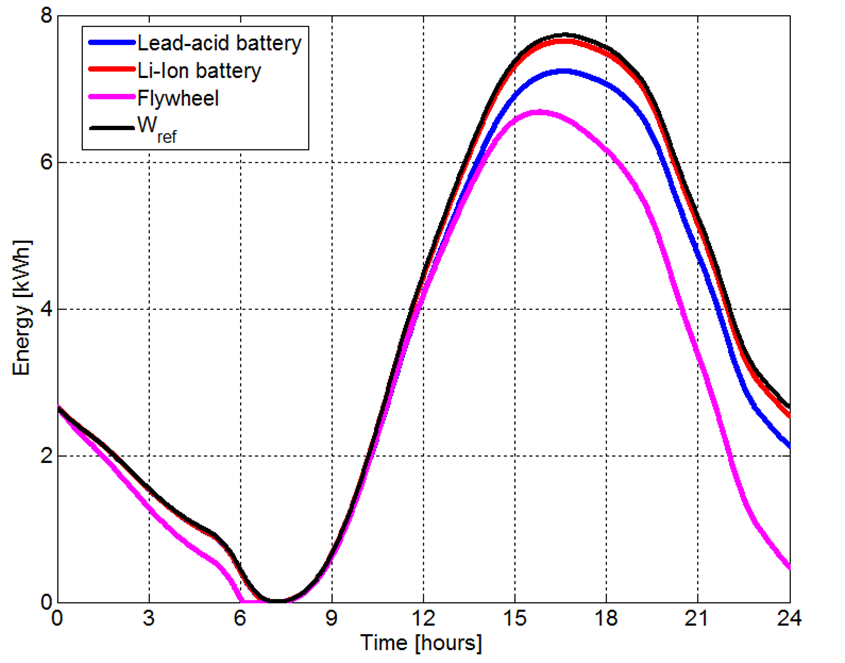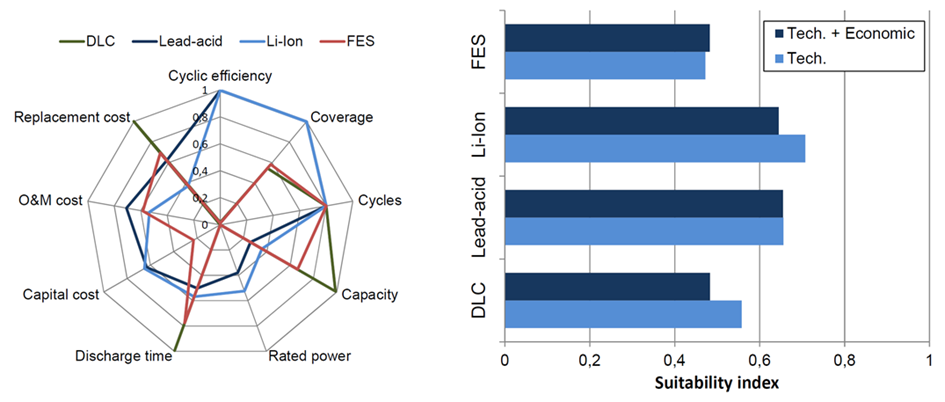Energy Storage for Smart grid Prosumers
Background
Due to the inherent random nature of renewable energy sources (peak power production possibility do most of the time not coincide with the peak power need) we need to store this energy produced “carbon free”. In addition, there is increasing need and demand for varous smart services for prosumers and the grid, e.g. peak shaving, frequency regulation and V2G/H/X (“Vehicle-to-grid/home/application). Different storage methods exist (e.g., batteries, supercapacitors, flywheels, etc.) and they all have different characteristics and, thus, different advantages and disadvantages. For a given situation concerning the demand of the prosumer with given requirements and constraints and, potentially, with a given renewable power input (e.g., wind, solar etc.) different energy storage systems will be unequally suitable to fulfil a given scenario or service. The storage can also be situated in an energy storage hub where several types of power can be transferred, transformed and stored to optimize the situation to meet a overarching goal.
Aims
The overarching aim is to ease the introduction of renewable energy and smart services by aid of energy storage systems and other green technologies. By analyzing the natural behaviors, constraints and demands of electrical loads in relationship to the potential requested smart service (with or without renewable energy sources) and modeling the vast number of different energy storage systems the most suitable combination for the particular scenario can be found. For example, the suitability of, e.g., a given battery at a, e.g., solar power park can be stated (as illustrated in figure). Different scenarios can be investigated where the prosumer has different requirements, e.g., facilitation of renewable energy and different smart services are examined. This includes the effect of long-term operation of the storage, i.e., “aging”. In some cases a hybrid energy storage, consisting of smaller individual energy storage systems work together in synergy to act as one single energy storage unit with enhanced performance.
Approaches
By modeling (and translating) the physical performances of various energy storage systems (charge and discharge characteristics, capability, losses, aging etc.) to electrical circuits we can implement these in available software (e.g., Matlab, Simulink, GAMS etc.) and include various electrical loads and renewable energy sources. Thus, we can first test the suitability of a given energy storage system in a situation and then use available optimization routines to find the optimal system for that situation. By using experimental setups the models of the energy storage systems are verified or improved and the behavior better understood (e.g., losses). The challenge is to find models that are realistic in terms of level of complexity (i.e., usable) but accurate enough compared to experimental data as well as to find representative and accurate data from usage of renewable energy sources at various electrical loads.
Keywords
Energy storage, smart grid, renewable energy, energy hubs, batteries, flywheels, CAES, SMES
Links
Klick here to see all the available results (external webpage)
Project leader
Associate Prof. Daniel Månsson, Div. of Electromagnetic Engineering, School of Electrical Engineering and Computer Science, Royal Institute of technology KTH
Other project members
Cong-Toan Pham, Post-doc
Yang Jiao, Ph.D student
Ramana Reddy Avula, Ph.D student
Other funding agencies
The Swedish Energy agency, China Scholarship Council (CSC), BRF Stenberg

Different energy storage systems will handle a given situation with different success. The prosumer is here supplied via solar power and the reference gives the energy that the storage system has to handle to fulfil the demand. As can be seen only the Li-ion battery chosen here will be approximately satisfactory in this situation.

Different storage systems have different characteristics in the different key parameters that makes a suitability comparison between the storage options possible. The scenario investigated here, of capacity firming for wind integration, shows the suitability of different storage systems. The suitability index gives a straight forward way to compare the different energy storage systems.
